With the recent steel-cutting ceremony for HMS Sheffield, the fifth Type 26 frigate, there are now eight Royal Navy frigates under construction in Scotland.
This milestone underscores Scotland’s importance as a centre for advanced shipbuilding.
The current builds include five Type 26 frigates—HMS Glasgow, HMS Cardiff, HMS Belfast, HMS Birmingham, and HMS Sheffield—and three Type 31 frigates—HMS Venturer, HMS Active, and HMS Formidable.
These two classes represent the backbone of the Royal Navy’s future surface fleet.
The Type 26 frigate, also known as the City-class, is a class of advanced anti-submarine warfare (ASW) vessels being built for the Royal Navy. Designed as part of the Royal Navy’s modernisation efforts, the Type 26 is intended to replace the ageing Type 23 frigates, particularly in the ASW role. Each ship in this class has a displacement of around 8,000 tonnes and measures approximately 149.9 metres in length. The Type 26 is characterised by its focus on stealth, featuring a hull design and noise-dampening measures to minimise acoustic signatures, making it highly effective in detecting and countering submarines.
In terms of capabilities we can expect, the Type 26 frigate is equipped with an array of advanced sensors and weapons. It is armed with a 5-inch Mk 45 naval gun, providing long-range fire support, and is equipped with the Sea Ceptor missile system for area air defence. For ASW, the frigate carries powerful sonar systems, including a towed array, and can deploy anti-submarine torpedoes. The Type 26’s mission bay is designed to support a range of operations, from humanitarian aid to counter-piracy, allowing for the deployment of unmanned systems and small boats. Additionally, the flight deck is capable of supporting a range of helicopters, including the Merlin, which enhances its ASW and reconnaissance capabilities. With its combination of advanced systems and modular design, the Type 26 is intended to be a versatile platform that can adapt to a variety of operational demands.
The Type 31 frigate, also known as the Inspiration-class, is a class of general-purpose warships being built for the Royal Navy. Developed under the Royal Navy’s “National Shipbuilding Strategy,” the Type 31 aims to provide a versatile platform, complementing the more advanced Type 26 frigates. Each vessel in the class is designed to displace around 5,700 tonnes, with a length of approximately 138 metres. The design focuses on modularity, allowing for adaptability in various roles, including maritime security, disaster relief, and low-intensity operations, alongside its core warfighting capabilities.
In terms of capabilities that’ll be fitted, the Type 31 frigate will be equipped with a range of sensors and weapon systems suitable for multi-role operations. It will be fitted with the Sea Ceptor surface-to-air missile system, providing area defence against airborne threats. Additionally, it is capable of deploying a range of smaller boats and unmanned vehicles from a spacious mission bay, enabling flexibility in tasks like boarding operations or mine countermeasures. The Type 31’s flight deck can accommodate a medium-sized helicopter, such as the Wildcat or Merlin, further enhancing its reach and capabilities for anti-submarine warfare, search and rescue, and reconnaissance missions.
At the UK Defence Journal, we aim to deliver accurate and timely news on defence matters. We rely on the support of readers like you to maintain our independence and high-quality journalism. Please consider making a one-off donation to help us continue our work. Click here to donate. Thank you for your support!


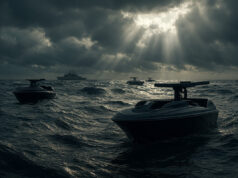
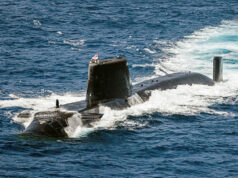

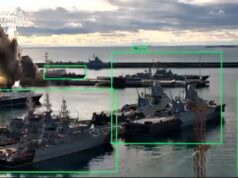
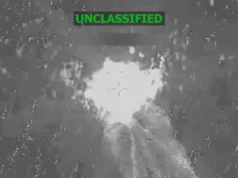

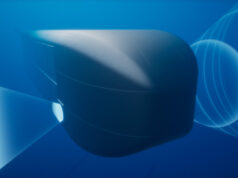
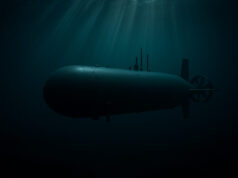



Great that 8 being built, but is it too much to ask that some are actually finished soon?
Need to speed up build, especially if Norway are going to take some 26
You would think they could speed up delivery with the current world situation. You don’t need a defence review to start that.
No you need a review of the defence review and then a review of the review of the review by Treasury.
If you are lucky something might happen sometime…
The real problem with speeding up is the gap for T83 which is unfinished. So if you move T26 fowards you need to fund T83. The only solution to speeding up T26 is more T26 from Norway.
To speed up T31 is harder as they are not hitting announced milestones. So I suspect the issues are more fundamental and to do with lack of warship build experience. But if you do speed it up then you need follow in work which means exports or UK Government ££££.
I agree the situation has got surreal now with T23s literally falling apart.
I suspect that we will not see an increase in funding for speeding up programmes until something happens that directly affects the public. Ukraine has to a great extent dropped off the press pages, and most people weren’t that interested in the first place. “A far away place of which we know little” was I think the quote from Chamberlain in 1938 about Czechoslovakia. Most of the Foreign Office appear to have their fingers in their ears hoping it will go away. And that attitude turned out well then and is not changing now.
Wait until someone tries a bit more hybrid warfare and cuts a few transatlantic cables on a Saturday afternoon, so that all of a sudden you can’t get Netflix or Disney with your evening take away. Or a couple of offshore wind farms suddenly drop off line on a cold night, and the whole grid gets a fit of the conniptions. Then you might get some more pertinent questions being asked.
Nice point about Netflix…
Not the current way, Alex. Heartbeat Manufacturing means small workforce and maximum profit. Profit goes before any other consideration. In days past, we had a huge shipbuilding industry, which could quickly swap priorities in time of war. We no longer have that. The large, skilled workforce has been pensioned off.
It’s the same in every large industry, from roads to rails, to all infrastructure projects.
Possibly a stupid question but could the Type 31s take over as MCM motherships? Stock up on AUV/ROV disposal systems that won’t take a huge amount of space up, a few divers. Seems like a decent way to have a ship capable of doing most duties that can be forward deployed and leave the T45/T26 for carrier duty.
I think it is possible, but it will be a waste.
Not a stupid question. There is a MCM variant of the A140 amongst several. Have a squizz at http://www.arrowhead140.com.
Well they have been developed too be flexible with those big bays into which you can put standard shipping containers.
So yes, should be pretty easy.
Looking at the weight and size of the autonomous mine hunting vessels a batch two OPV could be used. Though it looks like dedicated vessels would be capable of carrying more than one autonomous mine hunter, which would make sense if a long way from home.
The wider issue is that because there were no new ships built for so long, we’re funding this massive surge in capacity, and as soon as these frigates are finished and the Type 83 is finished, the same thing will happen and the industry will just dry up again because we won’t be ordering anything else.
Its a shame we’ve gotten to this point, as if we had a more incremental, continual build process the industry could be more robust, supporting small surges in demand with a decent baseline demand, but as it stands demand drops to zero, then there a massive surge.
Hopefully we can get export orders, especially on the Type 31s.
Everybody should want these, there must be loads of nations that don’t want to buy billion pound frigates.
Think of, say, all those Chinese pretend lifeguard ships they use to try to bait the Philippines et al.
There are plenty that want cheap frigates. But they can get them from someone else a lot faster
By ordering a dedicated replacement for the soon-to-be-retired Batch 1 River-class OPVs that can take up the duties of the current Batch 2 alongside the Type 31, you could sustain the shipyards for another decade or so, alongside export orders. If those new OPVs carried surface-to-air Martlet missiles for anti-drone work or just Ancilia decoy launchers, they could take up a third-rate frigate role in the RN, deploying to the Carribbean or the Falklands and not being entirely vulnerable to cheap air threats.
By the time the Type 83’s are finished we’ll be into the 2050’s, and we’ll be looking at the first Type 26’s and 31’s looking long in the tooth.
Hard to believe the waste of money involved.
Take a lesson from the natural world (non human). Over millenia, almost no creatures have evolved to exist in the surface of large open bodies of water.
Why?
Because anything residing in this environment becomes easy prey. And the penny doesn’t drop that mankind is back to being it’s own enemy.
The lesson has always been, carry a big sword but try not to use it. The only big swords these days are missiles and drones and only submarines represent some sort of reliable platform.
Another Navy saying, there are two types of naval vessels, submarines and targets.
Yet more targets.
I would happy pay little but more tax to get a bigger fleet.
As long as we get functioning healthcare, nationalised water and public transport as well, absolutely quite happy to pay more.
I just hope this isn’t a “Boom then Boost” situation. Unless SDR progresses the Type 83 and Type 32 projects, first Babcock and then BAES shipyards will see their workload rapidly declining in the early 2030’s. The nightmare scenario is that funding constraints result in the T32 being cancelled, and orders for T83 deferred in favour of a 10-year life extension for the T45’s. Given how little sea time some of the T45’s have had – several having spent far more time in refit – their material condition should be quite good and a LIFEX will make great sense to bean-counters looking at just the next spending plan, not the one or two thereafter.
As for Norway buying T26’s – don’t count on it! Norway has now launched a formal competitive tendering process for 5 or 6 new frigates. France will undoubtedly offer the lowest price, but the USA/Italy bid (based on the Constellation design) will be very strong. Given the apparent requirement for the first ship to delivered in 2029, BAES can’t submit a complaint tender unless the RN agrees to transfer Belfast, or just possibly Birmingham, to Norway.
If done properly the SDR ought to identify a need for more T45-T83 type vessels so building say 6 T83 alongside life extension of T45 would be needed.
Then there would be a chance to start on a regular build and replace program to keep up to date so that T45 are slowly replaced with further T83 or perhaps T84 if that comes next and is an improvement on T83.
HMS Hood was once thought to be the pinnacle of navel design but was in fact shown to be obsolete before it was completed.
Perhaps 48 sea ceptor along with a couple of CIWS rapid fire guns is already obsolete with what has been learnt in the last couple of years when it comes to defence against massed drone attacks which concentrate fire on radar systems. Four hits with drones of a few kg could blind all defence systems on a type 45
Double that number and build them in half the time and we night have a chance. War is likely coming with Russia and I think we need to have a serious mental shift toward national preparedness for the unthinkable, which I hope to god doesn’t materialize.
Waste of money.
We haven’t the damn manpower to crew them, and when that eventually arrives, they leave because they can’t watch tiktok whilst at sea.
Welcome to the future? You have to find a way to attract modern sailors
Can we not show some Ambition & Commitment and Speed up the Build & Fit out schedules. Yes it will need funding for acceleration costs however What a Strong Message it would send to our Allies & Potential Adversaries. Re-arming is expensive but needs to be done at pace. Let’s not re-learn the Lessons of the past.
Didn’t see any mention of MK41 Launcher. Have we run out of money or is it the old phase FITTED FOR BUT NOT WITH also no mention of the Missiles that will be fitted I.e Joint Strike Missile /RGM-109 Tomahawk / Aster 30 Block 1NT (New Technology)We need to stop building ships to look good and have a well armed ship They have less ships they need to be well armed
We’re not putting Aster on T26 ever, it’s only got self defence missiles.
Tomohawk isn’t confirmed either, is JSM even vls launched?
Only confirmed missiles is Fcasw
In order to keep the shipyards operating and remove the cost risks of stop/start production why don’t we just order more ships than we need and then sell first of class when the newer ships come into operation. So you need 8 and you build 10. You’d get the money for the sale plus you’d save money on mid-life maintenance by having newer ships. You’d probably reduce the cost per unit because you’ve built more and you’d give the shipyards the opportunity to get more efficient and have the headway to make long term capital investments. It would also give the Royal Navy a small reserve it could tuck into if one of their operational ships became unexpectedly poorly or the international situation deteriorated and they needed to grow their fleet quickly.